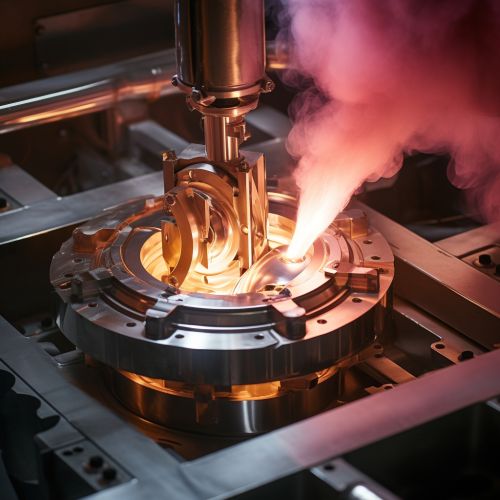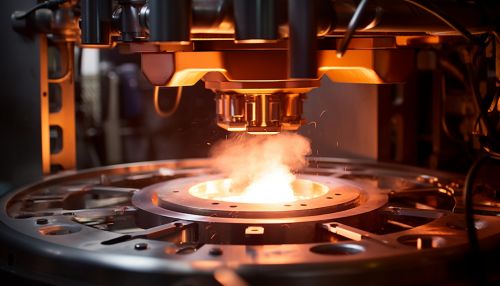Cryogenic Treatment of Metals and Its Effects on Properties
Introduction
Cryogenic treatment, also known as cryogenic processing, is a specialized process that involves the use of extremely low temperatures to enhance the physical and mechanical properties of metals. This process is a modification of the traditional heat treatment process, and it is used to increase the wear resistance, hardness, strength, and durability of metals.


History and Development
The concept of cryogenic treatment dates back to the 1930s when it was discovered that rubber and other materials could be made more durable by exposing them to low temperatures. However, it was not until the 1960s that the process was applied to metals. The development of cryogenic treatment has been driven by the need to improve the performance and lifespan of metal components, particularly in industries such as aerospace, automotive, and tool manufacturing.
Process
The cryogenic treatment process involves three main stages: cooling, soaking, and tempering.
Cooling
In the cooling stage, the metal is gradually cooled to a cryogenic temperature, typically around -196°C, the boiling point of liquid nitrogen. This cooling is done slowly to avoid thermal shock, which could damage the metal.
Soaking
Once the metal has reached the cryogenic temperature, it is held at that temperature for a period of time, a process known as soaking. The duration of the soaking period can vary from several hours to a few days, depending on the type of metal and the desired properties.
Tempering
After soaking, the metal is gradually warmed back to room temperature, a process known as tempering. This is followed by a secondary tempering process at a higher temperature, which helps to relieve any residual stresses in the metal.
Effects on Metal Properties
Cryogenic treatment has a number of effects on the properties of metals, including:
Increased Wear Resistance
One of the primary benefits of cryogenic treatment is increased wear resistance. This is achieved through the transformation of retained austenite, a soft and ductile phase of steel, into martensite, a harder and more wear-resistant phase. The process also promotes the formation of fine carbides, which further enhance wear resistance.
Improved Hardness
Cryogenic treatment can significantly increase the hardness of metals, particularly those that are high in carbon content. This is due to the formation of martensite and fine carbides, which are harder than the original metal matrix.
Enhanced Strength and Durability
The transformation of retained austenite to martensite and the formation of fine carbides also contribute to increased strength and durability. The resulting metal is more resistant to deformation and failure, making it suitable for high-stress applications.
Reduced Residual Stress
Cryogenic treatment can help to reduce residual stress in metals, which can lead to distortion and cracking. The process achieves this by promoting a more uniform distribution of carbon atoms within the metal, which reduces the likelihood of stress concentrations.
Applications
Cryogenic treatment is used in a wide range of industries to enhance the properties of metal components. Some of the key applications include:
Aerospace Industry
In the aerospace industry, cryogenic treatment is used to enhance the performance and lifespan of critical components such as turbine blades, landing gear, and engine parts.
Automotive Industry
The automotive industry uses cryogenic treatment to improve the wear resistance and durability of components such as gears, bearings, and brake rotors.
Tool Manufacturing
Cryogenic treatment is commonly used in tool manufacturing to increase the hardness and wear resistance of cutting tools, dies, and punches.
Limitations and Challenges
While cryogenic treatment offers many benefits, it also has some limitations and challenges. These include the high cost of the process, the need for specialized equipment, and the potential for thermal shock if the process is not properly controlled. Additionally, not all metals respond to cryogenic treatment in the same way, and the benefits can vary depending on the type of metal and the specific application.
Future Directions
Research into cryogenic treatment is ongoing, with a focus on understanding the precise mechanisms by which the process affects metal properties, and on developing new applications for the technology. Future directions may include the use of cryogenic treatment for non-metal materials, and the development of more efficient and cost-effective cryogenic treatment processes.
